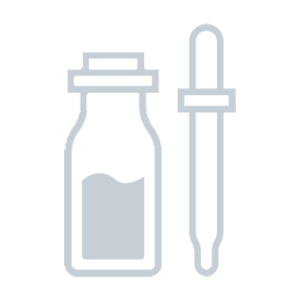Comparison between Youth To The People Adaptogen Deep Moisture Cream vs. Klairs Rich Moist Soothing Cream
- 30 components -
- 64 components -
Find out which product is better for your skin.
Ingredients in both products 7
Components only in Youth To The People Adaptogen Deep Moisture Cream 23
Helianthus Annuus (Sunflower) Oil, Octyl Palmitate, Propanediol, Rhodiola Rosea, Ocimum Tenuiflorum (Holy Basil) and 18 more.
Uniqueness: 76.7%
Components only in Klairs Rich Moist Soothing Cream 57
Glycerin, Caprylic/Capric Triglyceride, Cyclopentasiloxane, Cetyl Alcohol, Cetyl Ethylhexanoate and 52 more.
Uniqueness: 89.1%
Face to Face
Components position by position
1
Water
1
Water
2
Helianthus Annuus (Sunflower) Oil
2
Glycerin
3
Octyl Palmitate
3
Caprylic/Capric Triglyceride
4
Glyceryl Stearate SE
4
Cyclopentasiloxane
5
Propanediol
5
Cetyl Alcohol
6
Stearic Acid
6
Glyceryl Stearate SE
7
Rhodiola Rosea
7
Cetyl Ethylhexanoate
8
Ocimum Tenuiflorum (Holy Basil)
8
Butyrospermum Parkii (Shea) Butter
-- Show others --
Positive Effects
Find out what good effects the product has
Both products provide the following effects: Antioxidant, UV Protection, Moisturizing, Pore Shrinking, Softening, Soothing, Anti-aging, Healing, Antiseptic, Deodorant, Regeneration, Hair conditioning, Hair strengthening, Hair protection, Hair growth stimulating
Effects unique for Adaptogen Deep Moisture Cream:
AntifungalEffects unique for Rich Moist Soothing Cream:
Cleansing, Acne fighting, Lightening, Lifting, Elasticity improvement, Nutrifying, Rejuvenation, Tones up skin, Protection, Anti dandruff, Body hair removal, Hair structure improvement, Hair gloss, Hair follicle nutrition-- Show more --
ECO Metrics
Find out how eco-friendly the components are
Vegan
No
No
Cruelty free
No
No
Reef friendly
Yes
Yes
Ozone layer safe
Yes
Yes
Organic score
natural
11 out of 30
37%
chemical
11 out of 30
37%
natural
31 out of 64
48%
chemical
24 out of 64
38%
Concerns
Pay attention to this information
-- Extra information --
Components by Skin Type
Find out what components are good or bad for your skin type
Dry skin
Positive: 5Negative: 0
Simmondsia Chinensis (Jojoba) Seed Oil#15Tocopherol#23Allantoin#25Panthenol#26Prunus Amygdalus Dulcis (Sweet Almond) Oil#27
Oily skin
Positive: 1Negative: 3
Allantoin#25Glyceryl Stearate SE#4Stearic Acid#6Prunus Amygdalus Dulcis (Sweet Almond) Oil#27
Sensitive skin
Positive: 2Negative: 0
Allantoin#25Prunus Amygdalus Dulcis (Sweet Almond) Oil#27
Dry skin
Positive: 8Negative: 0
Glycerin#2Simmondsia Chinensis (Jojoba) Seed Oil#9Butylene Glycol#11Betaine#14Beta-Glucan#281,2-Hexanediol#31Sodium Hyaluronate#35Palmitic Acid#52
Oily skin
Positive: 1Negative: 3
Lavandula Angustifolia (Lavender) Oil#60Glyceryl Stearate SE#6Stearic Acid#10Algin#56
Sensitive skin
Positive: 1Negative: 4
Aloe Barbadensis (Aloe Vera) Leaf Extract#33Citric Acid#27Algin#56Lavandula Angustifolia (Lavender) Oil#60Eucalyptus Globulus#64
Detailed view
Youth To The People Adaptogen Deep Moisture Cream vs. Klairs Rich Moist Soothing Cream
Position 1
Both products have the same component on this position.
#1Water
Origin: natural
Role: Solvent
EWG Rating [ 1 ]
Water is a great solvent. It’s neutral and doesn’t provide any strong positive or negative effects. It just helps components to mix better and to transport active components.

